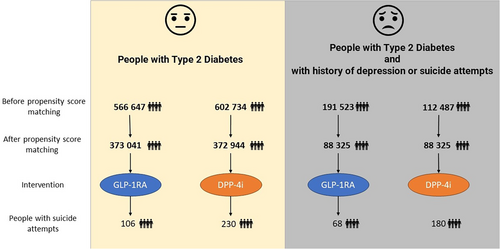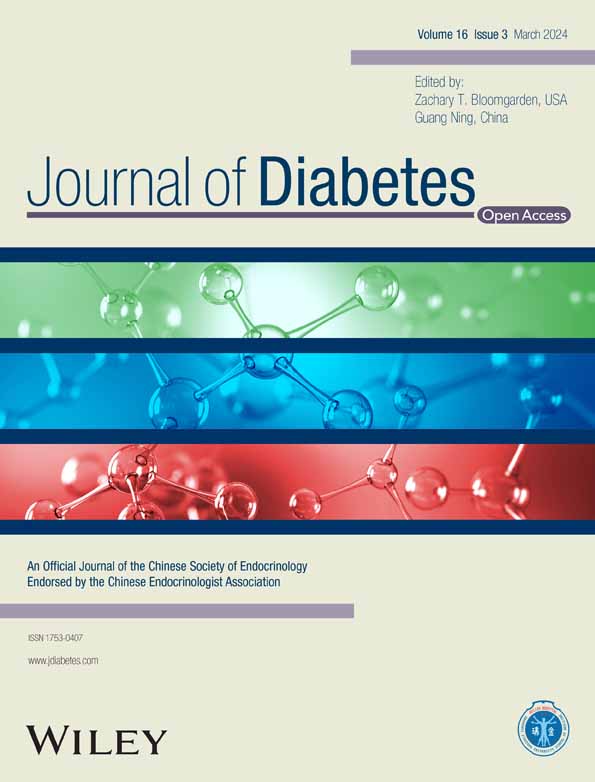Impact of treatment with GLP-1RAs on suicide attempts in adults persons with type 2 diabetes: A retrospective comparative effectiveness study based on a global TriNetX health research database
Abstract
Objective
To assess the association between glucagon-like peptide-1 receptor agonists (GLP-1RA) treatment and the risk of suicide attempts in people with type 2 diabetes (T2D), with a focus on subgroups with and without a history of depression or suicide attempts.
Methods
This retrospective cohort study utilized TriNetX, a federated network of real-world data. Using the Global Collaborative Network data, we collected electronic medical records from 113 health care organizations with 135 million patient records with 8 million with T2D, 83% from the United States. The four cohorts were identified based on age, medication, diagnosis, and presence of depression or suicide attempts. Analytic methods included measures of association and number of Instances, with propensity score matching employed to mitigate potential confounders. The primary outcome was the incidence of suicide attempts among people with T2D with GLP-1RA treatment in comparison with dipeptidyl peptidase-4 inhibitor (DPP-4i) treatment.
Results
People with T2D treated with GLP-1RA consistently exhibited a lower risk of suicide attempts compared to those treated with DPP-4i. This was particularly significant in people with a history of depression or suicide attempts. The risk and odds ratios were significantly lower in the GLP-1RA-treated cohorts than in DPP-4i across all analyses.
Conclusion
As compared with DPP-4i, our analysis shows a protective effect associated with GLP-1RA treatment on the risk of suicide attempts among people with T2D. However, further research, particularly prospective and randomized studies, is necessary to confirm these observations and understand the underlying mechanisms.





